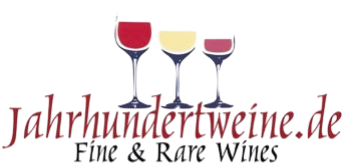Wine as an investment alternative
Introduction
At a time of low interest rates and volatile financial markets, investors are looking for alternative investment opportunities that offer both stable returns and portfolio diversification. Wine has emerged as one such alternative in recent decades, with high quality wines from prestigious wineries and exclusive vintages offering not only great enjoyment but also considerable financial value. This article examines the suitability of wine as an investment, analyses the opportunities and risks, sheds light on market mechanisms and provides practical recommendations for potential investors.
1 Wine as a tangible asset: historical development and market analysis
1.1 The history of wine investment
The idea of using wine as an investment is not new. Bordeaux wines were already being traded on the London Stock Exchange in the 18th century. However, the modern wine market as an investment platform only developed in the 1980s, when auction houses such as Christie's and Sotheby's began auctioning off high-priced wines. Since then, specialised trading platforms such as Liv-ex (London International Vintners Exchange) have established themselves, making the secondary wine market transparent.
1.2 Market development and performance
Studies show that top wines from Bordeaux, Burgundy and Tuscany achieve an average annual return of 8-15% in the long term. The Liv-ex Fine Wine 100 Index, which tracks the 100 most traded premium wines, has outperformed many traditional asset classes over the past 20 years. Especially in times of crisis (e.g. the 2008 financial crisis, COVID-19 pandemic), the wine market has remained stable, making it an attractive hedge.
2 Which wines are suitable as an investment?
Not every wine is a good investment. The decisive factors are:
2.1 Renowned origin & wineries
Bordeaux: Château Lafite Rothschild, Pétrus, Margaux
Burgundy: Domaine de la Romanée-Conti (DRC), Leroy
Italy: Sassicaia, Masseto, Gaja Barolo
USA: Screaming Eagle, Opus One
Champagne: Dom Pérignon, Krug
2.2 Excellent vintages (vintage quality)
Certain vintages achieve higher prices due to optimal weather conditions:
Bordeaux: 2000, 2005, 2009, 2010, 2015, 2016
Burgundy: 2005, 2010, 2015, 2018
Italy (Tuscany): 2006, 2010, 2015, 2016
2.3 Ratings by wine critics
Points from influential critics such as Robert Parker (Wine Advocate), James Suckling or Jancis Robinson have a strong influence on market value. A wine with 95+ points has significantly higher sales prospects.
3. investment opportunities: How can you invest in wine?
3.1 Direct purchase & own storage
Auctions: Sotheby's, Christie's, Zachys
Wine merchants: Berry Bros. & Rudd, Millésima
Storage: Professional wine cellars (12-14 °C, 70 % humidity)
3.2 Wine investment funds & platforms
Funds: The Wine Investment Fund, Cult Wines
Trading platforms: Liv-ex, Wine Owners
Blockchain & NFTs: Digital wine certificates for counterfeit protection
3.3 Wine shares & investments
Investors can also invest in listed wineries or wine trading companies, e.g:
LVMH (owner of Dom Pérignon, Château d'Yquem)
Treasury Wine Estates (Penfolds, Wolf Blass)
4 Risks and challenges
4.1 Market volatility & dependence on demand
The wine market is subject to trends - a decline in demand from China (as in 2012-2014) can depress prices.
4.2 Counterfeiting & provenance risk
Counterfeit bottles (e.g. "Rudy Kurniawan scandal") are a major problem. Only certified sources and certificates of authenticity offer security.
4.3 Storage & insurance
Improper storage destroys the value. Costs for professional storage (10-30 €/box per year) and insurance must be factored in.
4.4 Liquidity
Wine is an illiquid asset - it can take months to sell, especially for niche wines.
This essay provides a sound basis for deciding whether wine is a viable investment alternative. Individual expert advice should be sought for larger investments.
5 Tax and legal aspects
Germany: Private sales are tax-free after a holding period of 1 year (private sales transaction).
Commercial trade: subject to turnover and income tax.
Import regulations: Observe customs regulations for international purchases.
6. comparison with other alternative investment
| Investment | Yield | Liquidity | Risk |
|---|---|---|---|
| Wine | 8-15 % p.a. | Low | Medium |
| Art | 5-20 % p.a. | Very low | High |
| Watches | 5-30 % p.a. | Medium | Medium |
| Precious metals | 3-10 % p.a. | High | Low |
7 Conclusion: Is wine worth investing in?
Wine offers an attractive combination of tangible value, historical appreciation and low correlation to traditional markets. However, it requires in-depth expertise, patience and a willingness to invest in storage and security.
Recommendations for investors:
- Diversification: don't just focus on one region/vintage.
- Professional advice: Use specialised wine investment funds.
- Long-term perspective: Hold for at least 5-10 years.



